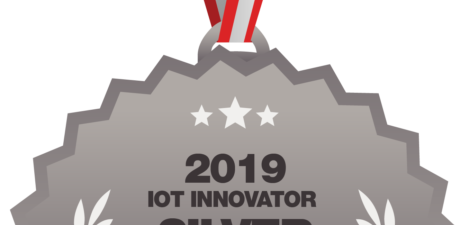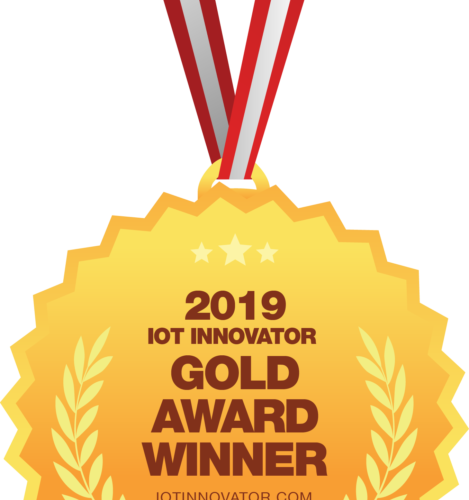We are at a unique time in history, experiencing an explosion of new technologies, from Artificial Intelligence (AI) to the Internet of Things (IoT), quantum computing to stem cell therapies. It’s an exciting time with almost unimaginable potential to enhance products, lower costs, and improve our health and productivity with AI and automation.
Yet, despite the obvious potential, surveys among executives show that most companies are struggling to achieve even the basic levels of maturity, such as gaining visibility across their supply chains. For example, KPMG reports in its Global Manufacturing Outlook that only six percent of executives could say they achieved full supply chain visibility.
Enterprise Applications
The reason is not hard to find. Most large companies have tens, if not hundreds, of systems in place to manage all aspects of the business including manufacturing, finance, human resources, and the supply chain. Companies have invested millions of dollars in these systems, and derive significant value from them. However, in today’s world of real-time commerce, outsourced operations and global supply chains, these standalone silos frustrate attempts to share data, gain visibility into the supply chain, and to collaborate with trading partners.
B2B Networks
B2B cloud networks evolved to connect business partners together to aid data sharing and collaboration. However, B2B networks have their own problems due to the fact they evolved by connecting disparate enterprise applications together with complex, inter application integrations, rather than by building a multi-party network first, and then creating apps on top of the multi-party platform.
As a result of this burgeoning complexity and the rigidity of these legacy IT-based systems and networks, companies are struggling to stay innovative and agile. According to another recent survey by Accenture, “C-suite executives say technical debt—the cost to rework IT to ensure the business thrives—severely limits their IT function’s ability to be innovative (70 percent), greatly limits their ability to migrate to new technologies (72 percent), and makes their IT function much less responsive to changes in the market (69 percent).”
Multi-Party Networks
The good news is that the issues associated with rigidity and complexity of legacy systems is starting to change with the development of multi-party networks as they maintain a single, authoritative version of the data. The network platform synchronizes the network data with external systems to provide a canonical, and near real-time, single version of the truth for all partners. Companies can connect and control the data they want to share with each individual trading partner, establish various roles within each individual organization, and determine to what extent each partner can view or modify the data.
One of the distinguishing characteristics of these networks is that companies need only connect once to the network, then all connections to other trading partners are configured virtually and almost instantly. This is hugely important, giving companies the ability to “rewire” business relationships quickly, to take advantage of new opportunities.
Sentient Business Networks
Multi-party networks laid the foundation for the next evolution of digital business networks that are now emerging; what we call “sentient business networks.” These advanced multi-party networks are able to “sense” and coordinate processes across the network to optimize and automate them. At the intersection of recent and emerging technologies, such as AI, IoT, automation and robotics, they create “intelligent” business networks that enable business processes and supply chains to run autonomously, or with minimal human involvement.
Key to these networks is IoT, the interconnected system of machines, devices, and sensors that makes possible remote sensing, control and self-regulating systems and ecosystems. Each industrial revolution has magnified or “outsourced” a human power and made it more potent, from enhancing our muscle power with steam and electricity, to enhancing our thoughts with computers aiding our ability to store, retrieve, and manipulate information. As we embark on the fourth industrial revolution, we are in the processing of outsourcing and magnifying our minds.
Thanks to IoT and related technologies of Industry 4.0, we can extend our senses out into the world and gather data on remote locations, objects, machines, conditions, and processes. There are sensors that gather the kind of data we do with our senses, such as live video feeds which act as our eyes, and sensors that detect gases like our nose. Of course, there are many more types of sensors, such as temperature, infra-red, vibration and acoustic.
The parallel to our senses goes further, as our brain integrates these “raw” feeds into actual things. The apple is not just a patch of red plus smooth texture and sweet smell. We perceive it as an integrated, complete entity and recognize it as such. Researchers at Carnegie Mellon University are working on synthetic sensors that work in a similar way. They use a cluster of micro sensors on a single unit that monitor color, motion, acoustics, temperature, and more, and then use machine learning to recognize objects, activities, and states in the environment. They do this by analyzing both the individual sensors and patterns across the array of sensors.
For example, the unit learns to recognize the “fingerprint” of say, a saw in a factory, from temperature changes, acoustics, and optical data. Similarly, a forklift has a very different “fingerprint” and can be tracked as it moves. Higher order analysis of this synthesized sensor data can also determine how much of each activity is happening, e.g. count the cubic feet of air passing through an air filtering machine.
These types of sensors along with synthetic sensors and scanners are enabling smart things, spaces, factories, vehicles, and more. It opens up incredible opportunities to analyze, interpret, optimize, and control robots, machines, vehicles, factories, and entire supply chains, from raw material to the retail shelf.
On the supply side, leading companies are already using IoT to drive efficiencies and better results. In his book, Data Strategy, Bernard Marr explains how the agricultural manufacturing company, John Deere, is using sensors on its equipment to collect and analyze data from its customers. John Deere combines it with other data sources such as weather and financial services, to provide customers with guidance on how best to use their equipment, what crops to plant where, and the likely return on their investment.
On the retail side, Walmart, Target, and Lowes are testing shelf-scanning robots that can check inventory on the shelf and ensure that everything is where it is supposed to be. Eventually, these robots can be connected to networks that can integrate with other processes to coordinate store activities such as shelf-stocking, and ordering products when inventory runs low.
Sentient business networks take this a step further by sensing, analyzing, and regulating systems and processes across multi-party business networks. They are akin to our higher order and more abstract functions, such as imagination, planning, and evaluation. It’s important to note that these computers and networks don’t actually perceive, identify, count, learn or think. These are functions of consciousness. But machines can simulate such activities which makes them extremely useful.
To take an example of a “track and trace” service on a multi-party network, that enables buyer, shipper, and carriers across various routes, to track the location and condition of the shipment, that service can be further optimized and automated. The service could automatically schedule dock doors at a distribution center based on the estimated time of arrival of a shipment, and schedule any labor and equipment resources at the same time.
Or, if the shipment is a perishable item such as food or drugs, and sensors detect an out-of-range reading in temperature, the system can flag the shipment as damaged and alert all relevant parties. If demand for the product is high, and the loss of the shipment means a projected out-of-stock in future, the system can autonomously trigger a replacement order if there’s enough lead time, or re-route another shipment from where supply is plentiful.
With a sentient business network, all the data on all conditions across the network can be fed back to the system to learn and improve everything from manufacturing and logistics processes to product and packaging design. And many of these processes can be automated, leading to faster, more efficient, and safer factories and supply chains.
Towards Autonomous Business
Today, there are multi-party networks that do many of these things already. We are yet to reach a fully autonomous factory or supply chain, but many of the pieces are in place and we’re getting closer every day. Advanced multi-party networks use machine learning and intelligent agents to continually scan the network for patterns, trends, and potential issues. These intelligent agents can identify anomalies and potential problems, such as spike in sales that is consuming inventory and threatening a stock out at a store and can recommend resolutions to manager. They can also take it one step further and actually intervene to execute the resolutions by triggering a new order and managing the logistics involved.
As these networks grow with an increasing number of companies recognizing their advantages, and as the data on the network mounts, intelligent agents are rapidly becoming smarter and more effective. This is driving dramatic improvements in service levels, while reducing costs, and minimizing disruptions and risks across the business network.
However, because the technologies themselves are continuing to evolve, it’s important that companies plan ahead and lay the foundations for this highly interconnected, high volume and diverse data environment. A network-first approach is vital, as it provides the underlying “nervous system” that connects individual items, machines, vehicles, factories, warehouses, suppliers, and other trading partners and services. This enables companies to see the big picture, make more informed decisions now, and enables better optimization and coordination of processes across all parties and across the network.
What’s Your Business Intelligence Quotient?
If intelligence is a function of brain size and neural connections, and it seems that it is, then those companies that persist in enterprise-first thinking and rely on company-centric and siloed applications will be at a severe disadvantage. We could say they have a low “Business IQ,” with limited sensory inputs and limited ability to connect and coordinate with other systems and business partners. No amount of processing power will overcome poor quality inputs and limited outputs.
On the other hand, the companies that adopt a network approach get a dramatic “IQ” boost by joining a network and connecting all their systems and trading partners into a single ecosystem. They have high Business IQs and can act more creatively, more intelligently, and achieve more advanced goals faster and more efficiently. With the ability to connect to other trading partners on the network, they have more potential connections and “pathways” that make them more resilient, agile, and adaptable to change. If intelligence is the ability to adapt to change, as Einstein said, then sentient business networks might be the apex of business IQ. A
Nigel Duckworth is a senior strategist at One Network Enterprises.




